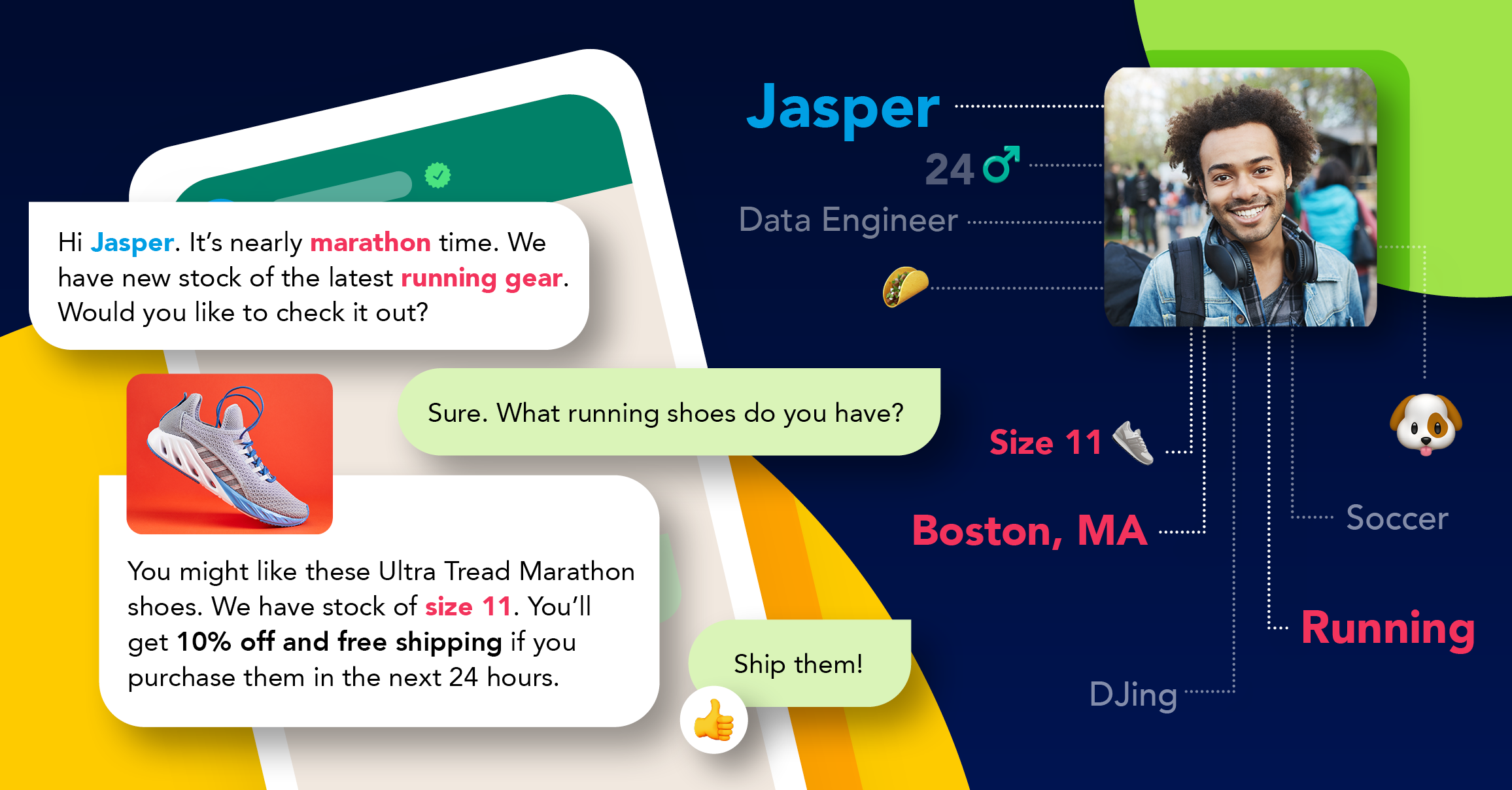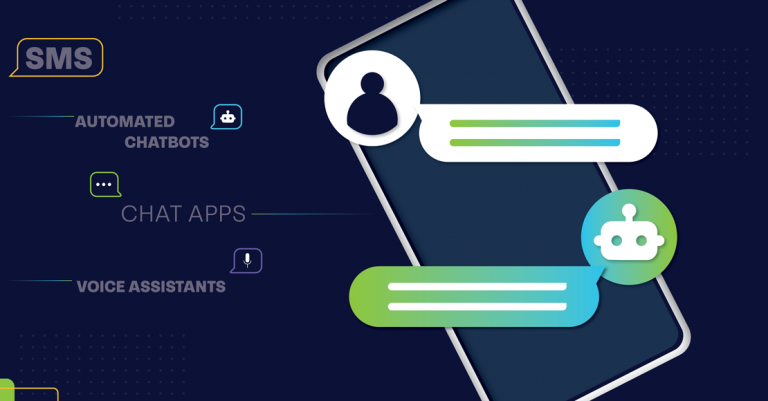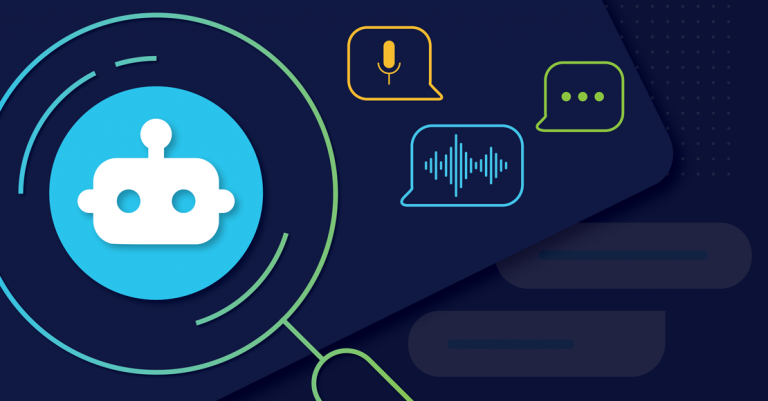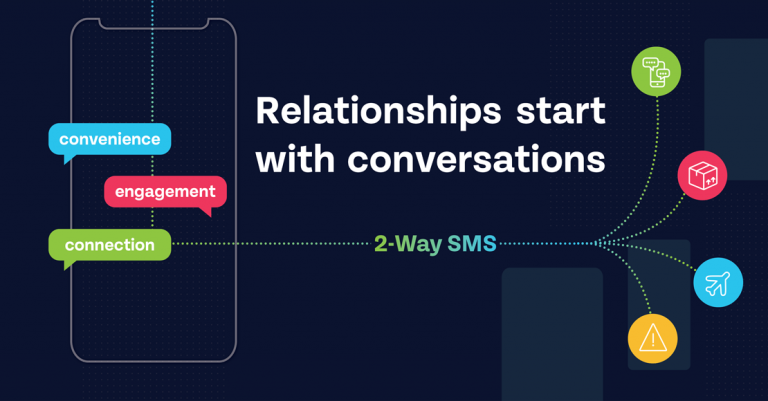
Conversational technologies encompass many types of innovations. From two-way SMS and automated chat workflows to chatbots and virtual assistants, these technologies are evolving rapidly. That’s in part because conversational technologies increasingly integrate artificial intelligence (AI) to recognize and respond to spoken and typed language. As the leader in chat commerce, Clickatell keeps up with all conversational technology advances.
AI-based conversational technologies let users gather information or perform functions through speech and natural language. By integrating these conversational technologies into devices or applications, your customers can do business with you—automatically—by speaking or using online chat. Customers get faster service as you free your employees to only deal with issues that require a human touch. Let’s take a closer look at a few conversational technologies.
Speech Technology Consulting Services
Want guidance as you learn about speech-based conversational technology? There are experts who can help. Turn to speech technology consulting services for help with voice-based technology. Voice-based technology is a specialized niche, and working with an expert is often the fastest path to creating a voice ecosystem in your business.
From feasibility analysis to design and development, the professionals who provide speech technology consulting services work with you to find an approach that meets your needs. Expect an outcomes-focused process when you engage speech technology consulting services. That helps ensure that implementing conversational technologies will streamline your business while providing value to your customers and enhancing your brand.
Natural Language Understanding
For AI-based conversational technology to work, it needs to comprehend the meaning of the user. This is called natural language understanding, and it’s a branch of natural language processing. With natural language understanding, you use machine learning to enable language comprehension in applications or devices. This is often applied commercially to complete functions like gathering news, answering questions, and analyzing data.
Although the result should appear simple for users, a lot of work that goes into natural language understanding. For starters, machines must be trained to understand dialect, syntax, and idioms to interpret what the user says or writes regardless of how they state it.
Many of today’s voice assistants do this very well, especially with common topics. For example, one user may ask a voice assistant, “How hot is it today?” while another user may ask, “What is the weather like?” Through machine learning and natural language understanding, the system can comprehend that both requests, although worded differently, are asking for the same data.
Speech Recognition
Simpler than natural language understanding, speech recognition technology turns spoken commands into text-based commands that a computer or device actions. After a voice-activated device or application receives a command, it breaks down speech into a series of sounds that it analyzes. Using specific voice-based algorithms, the software can then determine which words the user is most likely attempting to say. It then transfers these words into text-based commands that trigger a response from the software.
Speech recognition has rapidly improved in accuracy over the last decade, making voice-activated devices household staples. For example, lights that respond to “lights on” or “lights off” are quite common.
Virtual Assistants and Chatbots
Virtual assistants and chatbots represent one of the most popular and recognizable forms of conversational technologies in business. Through the use of machine learning, virtual assistants and chatbots are trained to recognize and respond to natural language, whether through voice or online chat. From there, they can identify the user’s desires or dilemmas and offer a solution. In chat commerce uses, chatbots can start a conversation about actions like redeeming a gift card or tracking a shipment—all from within your customers’ favorite chat apps.
These types of conversational technology are available around the clock and can resolve a host of concerns in minutes. The 24/7 responsiveness eliminates the need for users to wait for a customer support agent and frees up your agents to focus on more complex matters.
Speech and Language Technology Industry
Many of the world’s top brands are leaders in the speech and language technology industry. Apple, Google, IBM, and Amazon all offer technologies that incorporate speech and language recognition. These tech giants companies—along with innovators like Clickatell—all employ professionals dedicated to advancing the technology. These individuals work in an interdisciplinary field that involves an in-depth knowledge of linguistics and computer science.
W3C Speech Multimodal Standards
Do people communicate just one way? No, we talk on phones, use chat apps, email, and more—using different technologies and devices. Take email or chat as an example. You can chat or email with your phone or a tablet device or a desktop computer. That’s multimodal. W3C Speech Multimodal Standards offer a way to support multiple modes of communication within conversational technology systems. This may include speech, handwriting, typing, camera, or touch screen. A company may opt to integrate W3C Speech Multimodal Standards to accommodate those with disabilities, mobile users, or those on desktop computers.
Conversational Systems Architectures
A solid conversational systems architecture is crucial if you want to incorporate conversational technology into your business. Each piece of an effective conversational systems architecture must work efficiently on its own and in unison with the other elements. Your conversational systems architecture should include:
User Interface: As part of a conversational systems architecture, the user interface is the portion that your users interact with directly. Its design comprises how elements like chat look and feel to users.
AI: AI plays a key role in conversational systems architectures. The AI recognizes voice-based commands and natural language inputs, and triggers the correct response. This technology relies heavily on natural language understanding and speech recognition for accuracy and effectiveness.
Conversation Design: Conversation design dictates how the technology interacts with your users. The design essentially contains a script based on several patterns and frameworks, and it lays down the framework for how the software responds to user commands.
Analytics: Analytics let you monitor how the implemented conversational systems architecture is functioning. This happens in many ways, from logging conversations to visualizing results and retraining the AI solutions in place. Essentially, it is a way to get ongoing feedback regarding performance.
Talk to the Experts at Clickatell
Do conversational technologies sound complicated? They don’t have to be. At Clickatell, we make it easy to take advantage of conversational technology using chat commerce. With chat commerce, your customers can connect with you through their favorite chat apps—many of which already work seamlessly with the conversational technologies integrated in their devices. Talk to our team today to learn more.
Explore other articles
Step into the future of business messaging.
SMS and two-way channels, automation, call center integration, payments - do it all with Clickatell's Chat Commerce platform.








